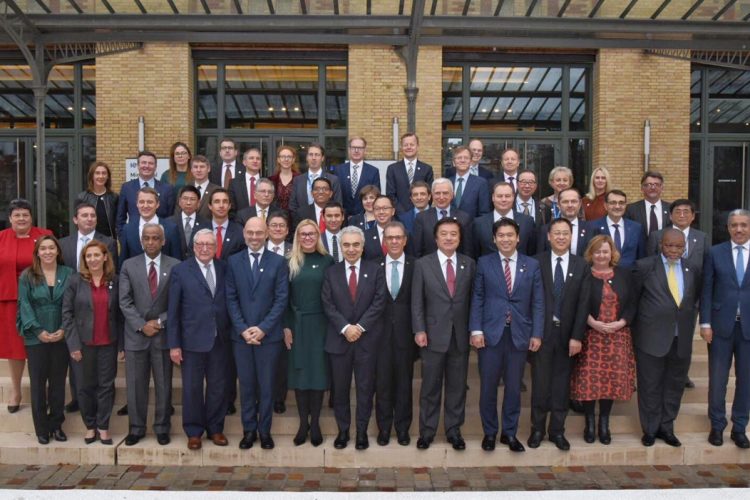01/10/2020
IEA expected to play major role in increasing global energy security

Japan’s energy self-sufficiency rate was 11.8 percent in 2018, relatively low compared to other member countries in the Organization for Economic Co-operation and Development (OECD). Additionally, as Japan is an island nation, its grid is not connected to other countries.
Such characteristics have prompted the country to pursue the potential of a variety of energy sources and to meet energy demands with the best possible mix of these resources. These efforts are based on the “3E+S” policy, which sets out to strengthen energy security, economic efficiency and adaptation to the environment simultaneously without compromising its major premise of securing safety.
The global energy situation, in the meantime, is at a major turning point, represented by the move toward decarbonization. The 2015 Paris Agreement — Japan is one of the countries that ratified the climate pact — aims to limit the average global temperature rise to less than 2 degrees Celsius above pre-Industrial Revolution levels and pursue efforts to cap the increase at 1.5 degrees. To this end, the accord hopes to see global greenhouse gas (GHG) emissions peak as soon as possible and strike a balance between GHG emissions and carbon absorption by forests and other ecosystems in the latter half of the 21st century.
Long-term strategy
On the back of such a move, many national governments have accelerated their efforts, and a wide range of players, including corporations, investors and financial institutions, have expanded their engagement by shoring up their environmental, social and governance investments to achieve the goal of decarbonization in dealing with the global issue of climate change.
Japan revised its energy strategy, formulating the Strategic Energy Plan in July 2018. In anticipation of the implementation of the Paris accord, the government is set to work on energy transformation and decarbonization within a long-term time frame ending in 2050.
Obviously, there are several possible scenarios in achieving the goal of decarbonization. The government seeks to develop the transformative environmental innovation strategy based on a “virtuous cycle of environment and growth” raised in the “Long-term Strategy under the Paris Agreement” in June. Taking the initiative, the country pledged to invest ¥30 trillion in the energy and environmental field over the next 10 years.
Governments across the world have sought their own optimal energy system in line with each country’s situation. Japan believes that it’s essential to pursue the achievement of decarbonization and its energy policy under the aforementioned 3E+S philosophy.
Launch of strategic ties
The International Energy Agency (IEA) concluded its two-day ministerial meeting in Paris in December, adopting a joint communique. The gist of the meeting can be summarized in the following three points — energy security, establishment of the sustainable energy system and strengthening cooperation with the IEA’s association countries.
The IEA is made up of 30 member countries. In addition, the IEA also works to open doors for emerging countries; the IEA family includes eight association countries.
On enhancing energy security, the ministers reaffirmed the importance of the IEA’s obligation regarding emergency oil stocks for member countries in light of recent supply disruptions. They requested the organization’s secretariat to facilitate close collaboration with association countries in addition to the IEA’s further contribution to strengthening security of natural gas and electricity.
As for establishing a sustainable energy system, the ministers expressed their expectations that the IEA continues to play a central role based on the idea of “exploring the contributions of all fuels and technologies.” In this regard, they agreed to further enhance the organization’s role for innovation in the global transition to cleaner energy, energy efficiency and renewables.
Regarding the reinforcement of ties with association countries, the 30 member nations approved the launch of a new strategic partnership with India — an association country — that would enable its future membership.
The IEA has long enhanced cooperation with nonmember states, mainly emerging countries in Asia that are seeing a rapid rise in energy consumption. With the establishment of this strategic partnership, the international body seeks to secure global energy security through imposing the same “obligations” as member countries on other nations within the partnership; holding emergency oil stocks and coordinated stock release are two examples.
Currently, about 40 percent of the global energy demand belongs to IEA member countries, but the ratio would rise to around 70 percent if nonmember states such as India, China and Indonesia were to join the international entity. The energy demand of India and countries in Southeast Asia in particular is projected to rise steadily. To meet demand, the countries would likely have no choice but to turn to fossil fuel — especially oil imports — which would surely see growing dependence on such imports.


